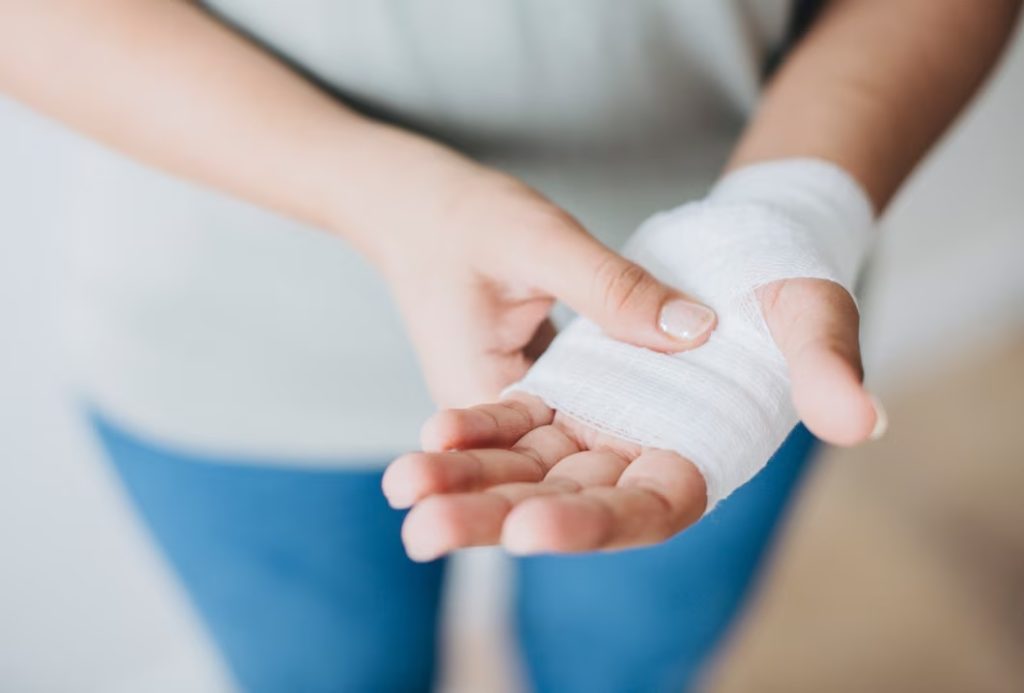There are multiple types of bandages for any kind of injury. These items are one of the first aid kit essential. They are practical, small to carry around, and come in handy in extreme situations.
The main idea of which as to why these items are important is their common usage purposes:
●They speed up wound healing by reducing bleeding.
● Blot up the bleeding wound
● Reduce the perception of pain
●Examine to find out whether any bacteria have transferred.
● Keep the bandage in place.
● Make the wounded body portion immobile.
It’s important to keep in mind that some bandages are different from the original ones.For example, they might be used to cover a wound with still another layer of dressing.
These types of bandages cannot have direct contact with the wound since they do not have the required qualities. Let’s now familiarize yourself with the various bandage kinds and their intended uses.
The Types of Bandages
The medical equipment offers a variety of bandages dedicated to any type of wound and injury. Here are some of them:
Crepe bandages
Also known as roller bandages, these are one of the most commonly used medical bandage types. They come in a variety of sizes, to suit different body types. They can hold the wound dressing in place, compress, and support/immobilize the injury.
When using this kind, it’s important to make sure the bandage is put correctly and the wearer is at ease.This is applied by unrolling the object a few centimeters at a time and wrapping it twice around the wound. By doing this, the harm will be appropriately covered.
For knees and elbows, it is necessary to hold the dressing in place and flex the joint lightly. Then wrap it copying the shape of the number 8, covering all the injured areas.
If the wound is on the hand, it is necessary to wrap the bandage around twice, starting from the inside of the wrist, later The person can start diagonal turns starting from the back of the hand and leading it to the base of the little finger. While wrapping the hand, it is important to be careful not to wrap the fingers together since it might lead to the person’s discomfort.
Compression bandages
They are elastic and comfortable since they are constructed of materials that can be stretched. By keeping pressure on the area of the body that is injured, they are designed to assist soft tissue injuries (musculotendinous injuries, strains, sprains, contusions, tendinopathy, tendinopathy).
This category of bandages also has its own bandage subcategories, which are:
● Short stretch compression bandages: This type is made of minimal stretchable materials and is used in cases of different swellings. It helps control the muscle contraction and prevents movements.
● Long stretch compression bandages: These bandages provide higher pressure, ensuring the body is at rest. They can be used to help and comfort sore or injured muscles, ligaments, and other body components. Furthermore, it is suggested to take them off before night because of the intense pressure. They assist strains and sprains and provide light compression, retaining bandages and splints in place.
Triangular Bandages
There is a versatility of spheres in which these right-angled triangle bandages can be applied. They are generally used to support the wounded limb and provide sustainability to it. To apply it correctly, the person should hold their arm at a right angle and across their chest.
The application should start by taking the bottom of the bandage, reaching it across to the shoulder, and tying the edges around it.
In conclusion, there are different bandage and gauze variations and alternatives for any kind of injury existing. They come in different sizes, shapes, and different usage purposes, the knowledge of which can be handy in emergency situations.
You may also like
-
Effortless Pigmentation Mark Removal: Exploring the Benefits of Yellow Laser Treatment
-
Pelvic Mesh Implants: What You Should Know About Potential Side Effects
-
How to Recover From a Foot Injury
-
Finding Balance: 7 Stores Offering the Best Traditional Chinese Medicine for Stress Relief
-
Sildisoft 100 and Valentine’s: Crafting Moments of Love

